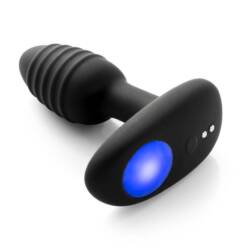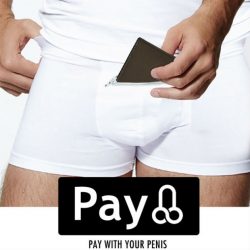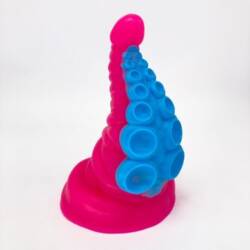When Will Male Sex Toys Go Mainstream?
Researcher questions the lack of masculine visibility in the sextech sphere.

Over the last five years, the world of sextech has become an increasingly female-centric space.
Even the SX Tech 2020 virtual conference held last November drew focus to the diverse array of female leaders, CEOs, and executives within the sextech space.
And rightly so. There have been phenomenal achievements for women by women in sex technology; femtech is a testament to this.
It’s also true that much of the technology also has a focus on either female pleasure or health, such as the diversifying range of interactive Kegels, pelvic floor trainers, vibrators, fertility trackers, and natural contraception.
Part of this diversity has also celebrated lifting the taboo around masturbation and sex toys in society. Many female sex toy companies capitalize on previous patriarchal oppression in society against females, particularly in sexual or domestic standpoints.
Take British sex toy start-up Naked Grapefruit, for an example.
The sexual wellness shop uses historical and social information to promote feminist and sex-positive values on social media. (Notably, its Instagram account was taken down for 24 hours following updates to the platform’s policies on sex-related content in December. Naked Grapefruit have suggested this is “censorship” of the female body and pleasure.)
As such, Naked Grapefruit’s Instagram illustrates the misconceptions around masturbation, sex toys, and sexuality in order to communicate to its (mainly) female-identifying audience. Many other female-based sextech startups have a similar narrative, albeit more toned down.
While it’s brilliant to see so many sextech and sex toy companies bringing the conversation forward via the power of the Internet, less can be said for discussion on other sex toys.
What about male sextech?
As a sextech researcher, it has become apparent that the conversation around male sex toys, and particularly male sex technology, is particularly lacking within the mainstream.
On one hand, we are starting to see female pleasure breakthroughs via influencers and celebrities like Lily Allen and Cara Delvigne who recently signed with female-led sextech giants Womanizer and Lora DiCarlo, respectively.
On the other hand, I cannot help but notice the lack of masculine or male visibility in the sextech sphere. Where are all the male influencers for male sextech?
I spoke with some sex therapists and psychologists about the conversations surrounding sex toys.
I asked Marianne Brandon, a psychologist and sex therapist currently based in Florida, why there might be less conversation around male sex toys.
She suggested that because men generally start masturbating before women, there is often more shame associated with masturbation. This may have impacted the fluidity of the wider discussion around male sex toys.
On the other hand, she also noted that because men start masturbating earlier, their hand often feels more familiar, and there is less desire to remove that and replace it with a toy.
After speaking with a few sex therapists, it seemed evident to me that the reason sex toys were ebbing into the mainstream for “females” was that they were being viewed as accessories and supplements to their masturbation or sex lives. Male sex toys were too often being confused as “replacements” for sex.
But, women have also faced significant shame and stigma around their sexuality and masturbation, and these conversations still manage to filter through. What’s so different about male sex toys? How come we don’t talk about them as much?
It seems that the conversations around male sex toys have not yet gone mainstream, despite the numerous benefits that using sex toys regularly can bring to anyone. They are tools to explore your bodies, and sextech could provide some interesting wellness solutions for men.
But there needs to be a conversation.
Expanding the discussion
Many great products are available for now, from companies such as KIIROO, Hot Octopuss, OhMiBod, and Womanizer to name a few.
While there are some companies that have developed a more diverse range for penis-owners like KIIROO, we are not seeing the same community that we do in femtech.
Many aspects of femtech are definitely beneficial to everyone in society. For example, fertility tracking and natural contraception apps will be useful to both parties in a relationship. There seems to be a wave of events that celebrate this, but again, rarely for men.
One place you can find a faint chatter about male sex toys is Reddit, if you know where to find them that is. However, this conversation is nowhere near as mainstream as the female-centric sex toy and sextech companies.
While many female sex toy companies are household names, male sex toys seem significantly lacking.
The fact that the most anonymous social platform is the only one with a real discussion about sex toys might be concerning. Is it that people don’t want to talk about male sex toys?
Another issue is that female-based sex toys are often portrayed as empowering.
I fully believe that to be true; taking control of your sexuality and pleasure is one of the most powerful things you can do in this world. But we only ever really hear that from female companies.
It seems unfair that there are so many ways for females to access sextech. There are events, workshops, and digital seminars. There have been a number of these throughout the various lockdowns this year. But not as nearly as many designed for those using male sex toys, or for people with a penis and/or identifying as a man.
Sextech has also been a great way to amplify issues around female health. The future definitely looks bright. But we need to start talking about it more.
Image sources: Photo by Mike Dorner on Unsplash

















